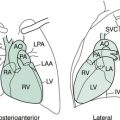Chapter 1 Approach to the examination
Positive mindset
All paediatric clinical examinations test the following aspects:
1. Clinical skills—history taking, physical examination, interpretation of findings, construction of a diagnosis or differential diagnoses, method of investigation, overall management of the patient.
1. A positive, confident response to personal confrontation. People with strong personalities have little trouble, but those who are easily embarrassed and shy away from confrontation between equals may do poorly. This response can be changed by methods described in this book.
2. Ability to sort out relevant from irrelevant information. Those who ‘think’, ask questions, seek explanations and try to understand rather than learn by rote do well.
3. Familiarity with the method of examination.
4. Endurance. Candidates who are ‘street-wise’ and naturally confident tend to have little difficulty, whereas their less confident colleagues are left to learn the hard way and eventually succeed or fail.
Eye contact
Work on not blinking. Practise unblinking eye contact, especially when under pressure. If you are intimidated and unable to look directly into the examiner’s eyes, a little trick is to concentrate your gaze on a point midway between the examiner’s eyes. Another helpful hint is to imagine a triangle on the examiner’s forehead, with the apex at the highest point and the base of the triangle formed by an imaginary line between both eyes. Keep your gaze directed at this area. In the mirror, practise narrowing your lids a bit but do not squint. When you move your eyes from one point to another (as from one examiner to another), do it without blinking. When you look from one person to another without blinking, it is unnerving for anyone watching you. To further emphasise this powerful gaze, move your eyes first without blinking and then follow with your head movement just behind the eye movement. Slightly lowering your head forwards while maintaining the gaze also adds power to the eye movement.
Speech training
Poor speech will definitely adversely affect your ‘viva’ performance and is surprisingly common. By poor speech we mean poor diction, inaudible voice and bad vocabulary. Tape-record yourself speaking or have someone sit about 2 metres from you and listen to you speak. Then note:
Reasoning skills
To assist in developing these skills, make a habit of meticulously examining every detail of a child’s clinical records. Analyse the data, learn to pick out any vital information that is missing and ignore irrelevant information. Deduce from available data what other information you need to justify your conclusions.
Assessment of examiner
The clinical examination
Preparation
Preparation for the short case requires much practice, especially when more candidates fail their short cases than their long cases. If possible, visit other hospitals, especially if these have a reputation for teaching. Experience as a ‘bulldog’ (i.e. observing an actual examination and assisting the candidate) is also invaluable in gaining insight about the conduct of the examination and the expectations of the examiners. Taking turns as an examiner during practice sessions with your colleagues is worthwhile because it allows you to experience first-hand the annoying habits of candidates. Mental rehearsal of short cases (and long cases) will accelerate learning (see Chapter 4, Achievement psychology).
In the week before the examination, check the clothing you intend to wear (make sure it fits!), check that you have the right equipment and remember the appointment with the hairdresser. In the few days before the examination, try to get some mental rest and leave study aside. Avoid any major changes in your daily routine and lifestyle.
Equipment
1. Pens (more than one and make sure they work), pencils and paper.
3. A hand-held eye chart for testing visual acuity (with a piece of string attached to the chart, the length of which is the recommended distance from eye to chart; this allows you to quickly position the chart at the correct distance from eye).
4. Cotton wool (fine sensation), new blunt pins.
5. Watch, preferably with a sweeping second hand.
7. Torch with new batteries and bulb.
8. A red-topped hat pin for visual field testing in the older child.
9. Toys, red woollen ball on a thread to test visual fields in infants, small container of hundreds and thousands (or equivalent) to test hearing, raisins (pincer grip), coloured cubes for developmental assessment.
10. Other: pocket ophthalmoscope, pocket tendon hammer, spatulas, tuning forks, Denver II developmental chart, percentile charts for height, weight and head circumference.






